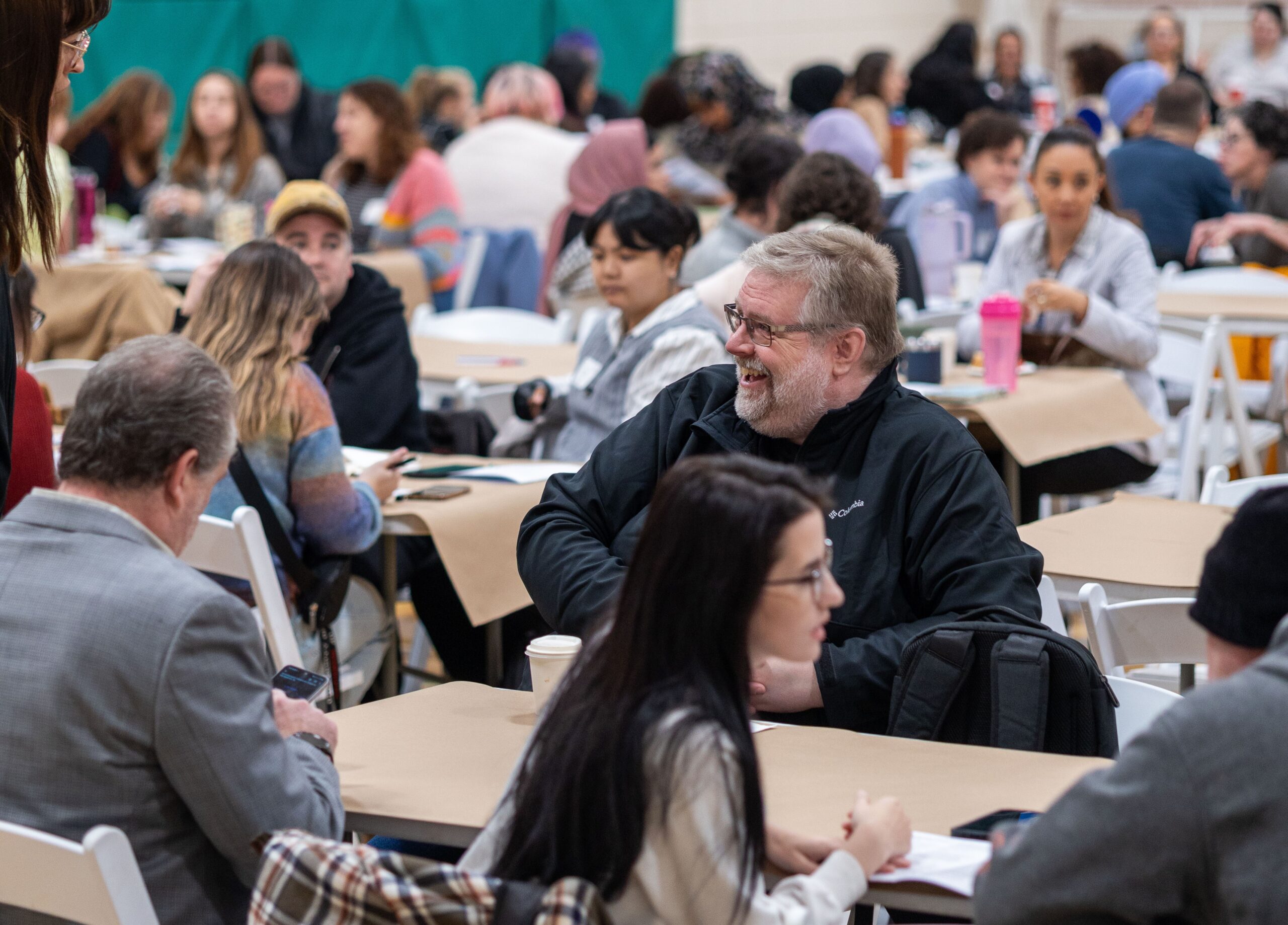 A CCEDNet Analysis of Manitoba’s New Building Sustainable Communities Program
A CCEDNet Analysis of Manitoba’s New Building Sustainable Communities Program
As I’ve been cycling and walking through inner city Winnipeg communities this spring, I’ve been thinking deeply about the role of some ‘keystone’ community-based organizations in our keystone province. On Selkirk Avenue, I go past the North End Community Renewal Corporation’s BCMP program – a partnership with Manitoba Housing and the North End community as an employment and training program for youth and residents interested in trades like carpentry.
I walk past community garden projects, housing repairs, and posters for the community-building events that DMSMCA, Spence Neighbourhood Association, and others deliver in my community. There are countless other examples of the work that community-led development organizations do to strengthen our communities and local economies.
This work brightens my movement throughout the city. I know it brightens the communities of so many across the province. The work of community-based organizations plays a significant role in inner city, urban, and rural community development across Manitoba.
Recent changes in Community Development funding have sent shock waves through many Manitobans, including me. I’ve had what feel like countless conversations with people trying to figure out where to go next.
On April 4, 2019, the Province of Manitoba announced significant changes to community-led development funding in Manitoba, introducing the new Building Sustainable Communities Program.
BSC combines seven funding streams in the Municipal Relations Department (Community Places Program, Neighbourhoods Alive! Community Initiatives Program and Neighbourhood Renewal Fund, Hometown Manitoba, Community Planning Assistance Program, Community Support Small Grants Program, and Partner 4 Growth). Find all the info at manitobago.ca
There are two intake dates: May 22 and December 15. There is no specified date when organizations would receive word of their success, but the first deadline is coming up in three weeks time.
The government intends to budget the equivalent amount ($7.9 million) from the seven programs in the new BSC Program, however it is now spread among the entire province, and any municipality, charity, or non-profit can apply. More groups will now compete for the same amount of money. As such, this program is a step away from targeted, social and economic development in key inner-city, Indigenous, rural, and Northern communities.
BSC will only accept new community initiatives. This shifts away from multi-year, stable core funding. Organizations will have to match their funding with 50% from other sources, including at least 10% from non-government grants. Ineligible expenses include salaries and administrative costs over 2.5%. Together, this will mean greater precarity for long-term community initiatives.
Community-based organizations and non-profits play a crucial role in the lives of many Manitobans. Non-profits are also an important part of our economy and society, and should be valued for the critical role they play. These changes move away from a stable relationship between government and community-based organizations with regards to funding.
Want to get involved in organizing around funding and community development? Contact Michael at
What You Need to Know about the Building Sustainable Communities Program:
Eligibility and Goals of the Program
Funding
Other Budgetary Details
Concluding Thoughts
Eligibility and Goals of the Program
- Mission is to “help to build thriving, sustainable communities”. Eligible projects include:
- Planning activities
- Capacity building of organizations
- Community or regional initiatives
- Capital infrastructure
- Initiatives and programs that support marginalized or underserved people in inner city or rural communities are not specifically supported through targeted community development funding. The new fund is open to any non-profit, charity, or municipality in the province. Funds are not specifically targeted toward Indigenous, First Nation, or Metis communities and programs. While these changes could be beneficial in allowing previously underserved organizations access to funding, we fear it moves away from a targeted approach that provides value for money addressing community goals for low-income, rural, Indigenous and Northern communities.
- Criteria that will be used to assess applications:
- Benefits for the province – including addressing government priorities
- Benefits for the local government
- Viability/feasibility of the project
- Accessibility – populations or specifics not defined
- Other considerations – proven extraordinary need, innovative ideas, impact, new organizations not previously funded, etc.
- Projects that “do not provide a community benefit” are not eligible. Projects with restricted or limited public access are ineligible. The details of what defines a community benefit, either to the province or region, and the scope of public access required, are not specified.
- Measurement and evaluation of projects are not specified, including capturing crucial long-term community development outcomes in key communities. Right now, the best place to understand government priorities might be in looking at the Minister of Municipal Relations mandate letter or the provincial throne speech. As well, you can read CCEDNet’s budget and throne speech analyses for some thoughts on the provincial government’s priorities over the past number of months.
Funding
- Organizations must match government funding with 50% funding from other sources, up to a maximum grant of $75,000 from this program. In-kind donations or revenue does not count toward the 50 percent of matching funds, creating a challenge for smaller and rural communities that have previously relied on provincial funding and in-kind community labour. While many other community-based organizations have already spent significant time diversifying funding sources, a concern for CBOs exists in the requirement that “a minimum non-government contribution of 10 per cent is required for all projects, except planning projects.”
- The non-government 10 percent of funding could come from donations from “individuals, businesses, charitable organizations, community foundations and service clubs” It is likely that marginalized or disproportionately low-income communities will have a more challenging time finding matching funding, particularly through individual or family donations, for community development projects in order to be eligible.
- While the government has stated that a consistent level of funding, $7.9 million, has been maintained, there is no guarantee it will reach long-standing community organizations or projects with a strong community benefit, since the application is much more open. In this new program, both capital and development projects are eligible for the same pool of money.
- The Neighbourhood Development Assistance fund is not part of these changes at this time and has been confirmed to the end of their current agreements for another two years. NRCs previously received project funding through the Neighbourhood Renewal Fund, the Community Initiatives Fund, and leveraged public, philanthropic, and private funding sources. While some project funding has been extended for another one to two years, it appears that these organizations will fall under the new BSC program after this time.
- Eligible projects include new community initiatives (eg. new programs, organizational start-up, prototyping and pilot projects). Ongoing programs that have existed for more than two years are not eligible for funding. Stable, long-term community development requires stable, predictable funding of proven programs. Only allowing new projects over predictable, long-term funding will only continue to stress and stretch the non-profit and charitable sector in Winnipeg, as well as across communities and rural centres across Manitoba.
Other Budgetary Details
- Salaries and other employment benefits of any employees of the applicant or their partners are not eligible costs. This will make long-term community development program that has contributed to vibrant communities and improved quality of life for many, many Manitobans at serious risk. Community programs cannot be run without staff. Many non-profit organizations, including the Neighbourhood Renewal Corporations, have leveraged the Neighbourhood Renewal Fund and Community Initiatives Program, along with other funding sources, to support community development programs and projects with paid, stable staff.
- Administrative costs greater than 2.5 percent of eligible project costs are not eligible. The standard among the charitable and non-profit sector is 5-15% of project costs related to administration. This will prove to be a significant challenge for organizations across the province to pay rent, keep the lights on, undertake an auditing process, purchase insurance, and ensure sound financial management.
- Gifts associated with the hosting of events are not eligible. This would include such items as tobacco for honouring an elder.
- Applications must require a letter of support from the local government. Right now, it looks like this letter could come from any official at the municipal level. For larger centres, the local councillor would be the best bet.
- The program states that “all surplus, ineligible, or unexpended grant funds are to be returned to the Manitoba government.” It is our belief that this only applies the up to 50% of funding from the province itself. It cannot recoup costs from other sources.
Concluding Thoughts
Complex community challenges like unemployment, urban and rural decline, poverty, social exclusion and environmental degradation require comprehensive responses, and those responses have proven to be most effective and sustainable when they are community-led. In Manitoba, community-based organizations have led crucial work strengthening our province’s communities and helped build local economies that benefit everyone.
The community has previously called on the government to support community-led development with targeted, multi-year, and streamlined funding, detailed in these CCEDNet policy resolutions here and here, adopted by the Network’s entire membership, as well as numerous government submissions.
The recent announcement of the Building Sustainable Communities Program does not address these recommendations and the concerns of community-based organizations and non-profits, with the exception of an easier-to-use online application form. In order to strengthen stability with community-based organizations, the government should immediately adopt the community’s recommendations.
Want to get involved in organizing to support community-led development funding in Manitoba? Contact Michael at




